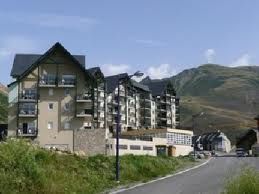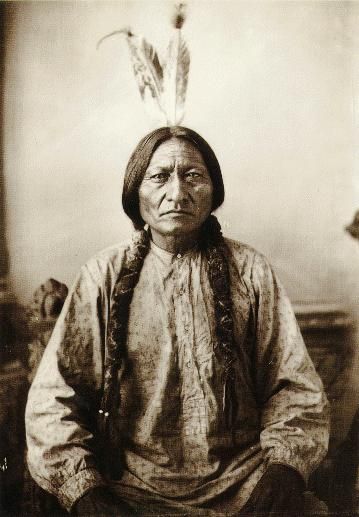The Tour de France 2012, the world’s premier cycling event kicked off last Saturday with the Prologue in Liège, Belgium and will conclude on July 22 with the traditional ride into Paris and laps up and down the Champs-Élysées. Over the next 22 days the race will take its course briefly along the Northwestern coast of France through Boulogne-sur-Mer, Abbeville and into Rouen then into the mountains of the Jura, Swiss Alps and the Pyrenees.
We will be Live Blogging Le Tour 2012 every morning at The Stars Hollow Gazette starting at 7:30 AM EDT. Come join us for a morning chat, cheer the riders and watch some of the most beautiful and historic countryside in Europe.
Bagnères-de-Luchon and Peyragudes
Bagnères-de-Luchon
Again Le Tour starts where it finished the day before, Bagnères-de-Luchon.
 The stage departed from the main artery of the city, les Allées Etigny. This avenue, characterized by its row of architecturally varied buildings is opposite the Thermal Springs for which the city has been known since Roman times. Busiest station of the Haute-Garonne and the Midi-Pyrénées, Bagnères-de-Luchon, that joined the European Association of Spa Towns in 2011, originally specialised in the treatment of respiratory tracts and rheumatology. It added lombago, fibromyalgia and cures for smoking cessation. Its vaporarium, huge natural steam room, is unique in Europe. It consists of a network of galleries built underground in the late 60s and renovated in 2010. From the depths of the mountain, the water filters through the rock walls giving out a soft vapour whose heat varies between 38 and 40 degrees. In addition to their therapeutic properties, the sources have geothermal potential which, in the near future, will be used to heat the spa facility and supply a heating network.
The stage departed from the main artery of the city, les Allées Etigny. This avenue, characterized by its row of architecturally varied buildings is opposite the Thermal Springs for which the city has been known since Roman times. Busiest station of the Haute-Garonne and the Midi-Pyrénées, Bagnères-de-Luchon, that joined the European Association of Spa Towns in 2011, originally specialised in the treatment of respiratory tracts and rheumatology. It added lombago, fibromyalgia and cures for smoking cessation. Its vaporarium, huge natural steam room, is unique in Europe. It consists of a network of galleries built underground in the late 60s and renovated in 2010. From the depths of the mountain, the water filters through the rock walls giving out a soft vapour whose heat varies between 38 and 40 degrees. In addition to their therapeutic properties, the sources have geothermal potential which, in the near future, will be used to heat the spa facility and supply a heating network.
Peyragudes
A new mountain and a new finish, Peyragudes is a ski resort in the French Pyrenees, situated in the departments of Hautes-Pyrénées and Haute-Garonne, in the Midi-Pyrénées.
 At the heart of the Pyrenees, Peyragudes is a mountain resort that offers 60 kilometres of ski pistes in the winter and a variety of mountain activities in summer. Created in 1988 following the merger of two ski resorts, the resort of Agudes and the resort of Peyresourde, Peyragudes straddles two departments, the Haute-Garonne on the Agudes side and the Hautes-Pyrenees on the Peyresourde side. In summer, many mountain activities are available such as paragliding, hiking, mountain scooters, mountain climbing and fishing while many cyclists frequent the resort to climb the surrounding legendary mountain passes like the Col de Peyresourde or the Aspin. In winter, Peyragudes is a modern ski resort with more than 1500 hectares with magnificent scenery on the highest peaks in the Pyrenees. The resort also offers many after-ski activities: discover the world of the piste-basher, have an introduction to driving sled dogs, try nights in an igloo but also relax at Balnéa, the natural spring spa located fifteen minutes away on the banks of Lake Genos-Loudenvielle.
At the heart of the Pyrenees, Peyragudes is a mountain resort that offers 60 kilometres of ski pistes in the winter and a variety of mountain activities in summer. Created in 1988 following the merger of two ski resorts, the resort of Agudes and the resort of Peyresourde, Peyragudes straddles two departments, the Haute-Garonne on the Agudes side and the Hautes-Pyrenees on the Peyresourde side. In summer, many mountain activities are available such as paragliding, hiking, mountain scooters, mountain climbing and fishing while many cyclists frequent the resort to climb the surrounding legendary mountain passes like the Col de Peyresourde or the Aspin. In winter, Peyragudes is a modern ski resort with more than 1500 hectares with magnificent scenery on the highest peaks in the Pyrenees. The resort also offers many after-ski activities: discover the world of the piste-basher, have an introduction to driving sled dogs, try nights in an igloo but also relax at Balnéa, the natural spring spa located fifteen minutes away on the banks of Lake Genos-Loudenvielle.


 The stage departed from the main artery of the city, les Allées Etigny. This avenue, characterized by its row of architecturally varied buildings is opposite the Thermal Springs for which the city has been known since Roman times. Busiest station of the Haute-Garonne and the Midi-Pyrénées, Bagnères-de-Luchon, that joined the European Association of Spa Towns in 2011, originally specialised in the treatment of respiratory tracts and rheumatology. It added lombago, fibromyalgia and cures for smoking cessation. Its vaporarium, huge natural steam room, is unique in Europe. It consists of a network of galleries built underground in the late 60s and renovated in 2010. From the depths of the mountain, the water filters through the rock walls giving out a soft vapour whose heat varies between 38 and 40 degrees. In addition to their therapeutic properties, the sources have geothermal potential which, in the near future, will be used to heat the spa facility and supply a heating network.
The stage departed from the main artery of the city, les Allées Etigny. This avenue, characterized by its row of architecturally varied buildings is opposite the Thermal Springs for which the city has been known since Roman times. Busiest station of the Haute-Garonne and the Midi-Pyrénées, Bagnères-de-Luchon, that joined the European Association of Spa Towns in 2011, originally specialised in the treatment of respiratory tracts and rheumatology. It added lombago, fibromyalgia and cures for smoking cessation. Its vaporarium, huge natural steam room, is unique in Europe. It consists of a network of galleries built underground in the late 60s and renovated in 2010. From the depths of the mountain, the water filters through the rock walls giving out a soft vapour whose heat varies between 38 and 40 degrees. In addition to their therapeutic properties, the sources have geothermal potential which, in the near future, will be used to heat the spa facility and supply a heating network. At the heart of the Pyrenees, Peyragudes is a mountain resort that offers 60 kilometres of ski pistes in the winter and a variety of mountain activities in summer. Created in 1988 following the merger of two ski resorts, the resort of Agudes and the resort of Peyresourde, Peyragudes straddles two departments, the Haute-Garonne on the Agudes side and the Hautes-Pyrenees on the Peyresourde side. In summer, many mountain activities are available such as paragliding, hiking, mountain scooters, mountain climbing and fishing while many cyclists frequent the resort to climb the surrounding legendary mountain passes like the Col de Peyresourde or the Aspin. In winter, Peyragudes is a modern ski resort with more than 1500 hectares with magnificent scenery on the highest peaks in the Pyrenees. The resort also offers many after-ski activities: discover the world of the piste-basher, have an introduction to driving sled dogs, try nights in an igloo but also relax at Balnéa, the natural spring spa located fifteen minutes away on the banks of Lake Genos-Loudenvielle.
At the heart of the Pyrenees, Peyragudes is a mountain resort that offers 60 kilometres of ski pistes in the winter and a variety of mountain activities in summer. Created in 1988 following the merger of two ski resorts, the resort of Agudes and the resort of Peyresourde, Peyragudes straddles two departments, the Haute-Garonne on the Agudes side and the Hautes-Pyrenees on the Peyresourde side. In summer, many mountain activities are available such as paragliding, hiking, mountain scooters, mountain climbing and fishing while many cyclists frequent the resort to climb the surrounding legendary mountain passes like the Col de Peyresourde or the Aspin. In winter, Peyragudes is a modern ski resort with more than 1500 hectares with magnificent scenery on the highest peaks in the Pyrenees. The resort also offers many after-ski activities: discover the world of the piste-basher, have an introduction to driving sled dogs, try nights in an igloo but also relax at Balnéa, the natural spring spa located fifteen minutes away on the banks of Lake Genos-Loudenvielle.

